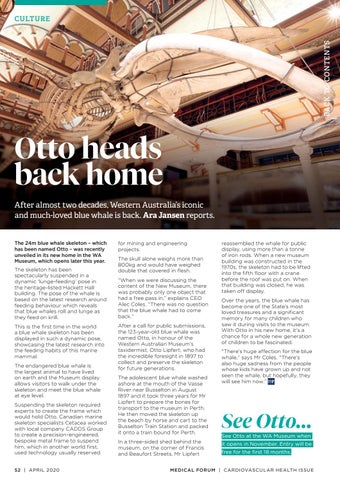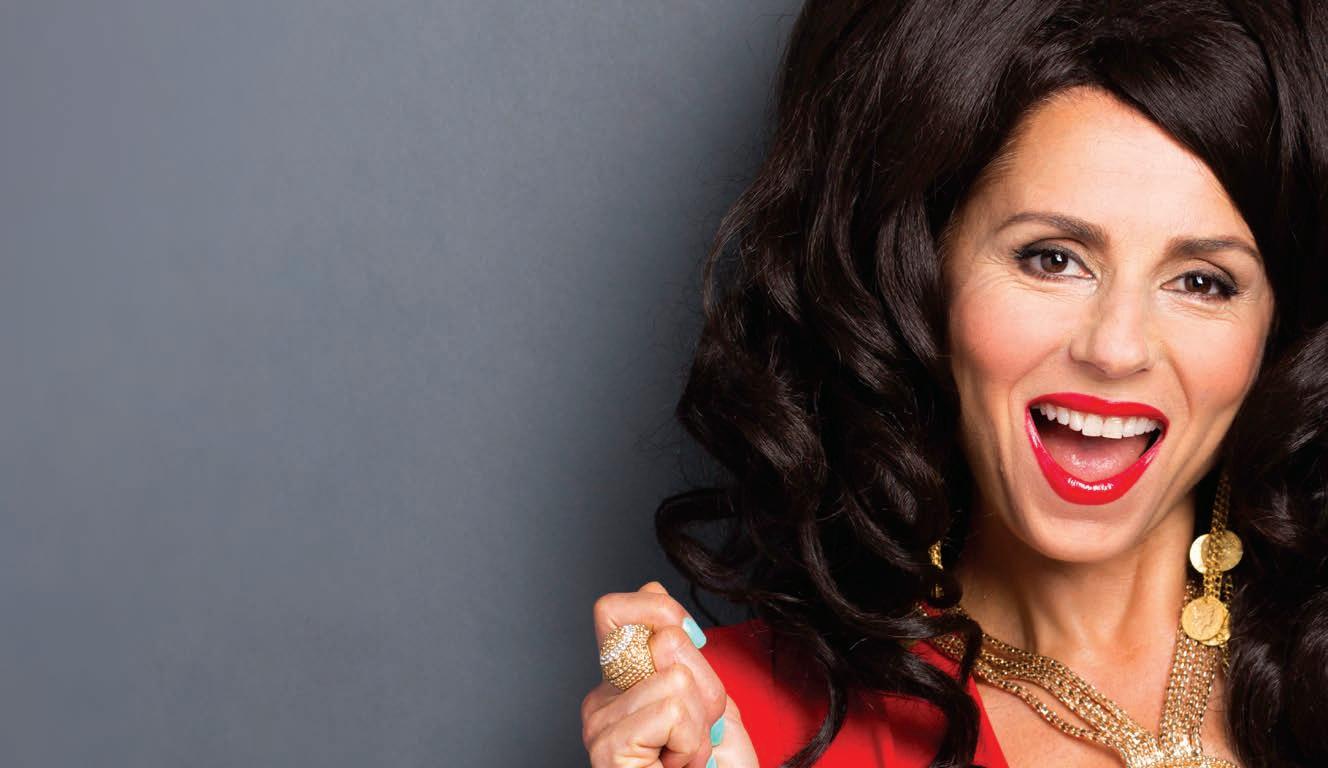BACK TO CONTENTS
CULTURE
Otto heads back home After almost two decades, Western Australia’s iconic and much-loved blue whale is back. Ara Jansen reports. The 24m blue whale skeleton – which has been named Otto – was recently unveiled in its new home in the WA Museum, which opens later this year. The skeleton has been spectacularly suspended in a dynamic ‘lunge-feeding’ pose in the heritage-listed Hackett Hall building. The pose of the whale is based on the latest research around feeding behaviour which reveals that blue whales roll and lunge as they feed on krill. This is the first time in the world a blue whale skeleton has been displayed in such a dynamic pose, showcasing the latest research into the feeding habits of this marine mammal. The endangered blue whale is the largest animal to have lived on earth and the Museum display allows visitors to walk under the skeleton and meet the blue whale at eye level. Suspending the skeleton required experts to create the frame which would hold Otto. Canadian marine skeleton specialists Cetacea worked with local company CADDS Group to create a precision-engineered, bespoke metal frame to suspend him, which in another world first, used technology usually reserved 52 | APRIL 2020
for mining and engineering projects. The skull alone weighs more than 800kg and would have weighed double that covered in flesh. “When we were discussing the content of the New Museum, there was probably only one object that had a free pass in,” explains CEO Alec Coles. “There was no question that the blue whale had to come back.” After a call for public submissions, the 123-year-old blue whale was named Otto, in honour of the Western Australian Museum’s taxidermist, Otto Lipfert, who had the incredible foresight in 1897 to collect and preserve the skeleton for future generations. The adolescent blue whale washed ashore at the mouth of the Vasse River near Busselton in August 1897 and it took three years for Mr Lipfert to prepare the bones for transport to the museum in Perth. He then moved the skeleton up the beach by horse and cart to the Busselton Train Station and packed it onto a train bound for Perth. In a three-sided shed behind the museum, on the corner of Francis and Beaufort Streets, Mr Lipfert
reassembled the whale for public display, using more than a tonne of iron rods. When a new museum building was constructed in the 1970s, the skeleton had to be lifted into the fifth floor with a crane before the roof was put on. When that building was closed, he was taken off display. Over the years, the blue whale has become one of the State’s most loved treasures and a significant memory for many children who saw it during visits to the museum. With Otto in his new home, it’s a chance for a whole new generation of children to be fascinated. “There’s huge affection for the blue whale,” says Mr Coles. “There’s also huge sadness from the people whose kids have grown up and not seen the whale, but hopefully, they will see him now.”
See Otto... See Otto at the WA Museum when it opens in November. Entry will be free for the first 18 months.
MEDICAL FORUM | CARDIOVASCUL AR HEALTH ISSUE













